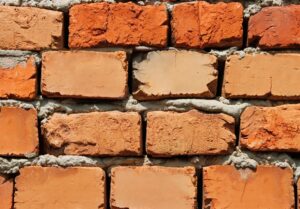Learn Tuckpointing Basics From Experts
Table of Contents
ToggleBricks offer a sturdy covering for fireplaces, chimneys, and interior and exterior walls. Even though the bricks have remained in good shape for decades, the cement used to bridge gaps degrades with time. That’s where tuckpointing comes into play. Do you wish to improve the appearance of a brick building’s interior or exterior? Learn more about tuckpointing in this article!
What is Tuckpointing?
- Tuckpointing is a technique used to improve the aesthetics of brickwork by extracting some of the damaged mortar, replacing the joints with fresh mortar that closely resembles the color of the brick, and adding a thin line of plaster in a contrasting color along the middle of the joint. This gives the appearance of slender, well-maintained seams.
Tuckpointing can be used on any brick building, although it’s most frequently seen on older brick houses whose owners seek to restore the impression of the narrow joints that were once present. Do you want to give your worn-out bricks a fresh, modern look while preventing mortar degradation? To find out everything there is to know about tuckpointing, continue reading.
Mortar Slang
The following masonry terminologies might help you comprehend the tuckpointing procedure:
Pointing
- In a new building, pointing refers to bridging mortar gaps. In a constructed wall, pointing can also apply to the mortar joints or the bricks’ gaps.
Repointing
- Repointing is the method of replacing worn-out mortar with fresh mortar in cracks.
Tuckpointing
- Tuckpointing is the procedure of extracting the old cement from seams, refilling it with cement that closely resembles the color of the bricks, and then inserting thin lines of plaster in a matching color (referred to as “fillets”) down the centers of the fresh cement joints.
Although “tuckpointing” and “repointing” are frequently used interchangeably, the results have different aesthetics. Both procedures entail removing the old mortar and adding fresh mortar; only repointing does not require drawing contrasting lines through the middle of the joints.
- Tuckpointing is a popular choice among homeowners since it gives the appearance of being sharper. Because the mortar and bricks are the same shade, unless you thoroughly inspect the wall, you won’t be able to tell where the mortar finishes and the bricks start.
The fillets also deceive the eye into believing the immaculately horizontal lines are the accurate mortar seams, giving the impression that the entire wall was built with neat, new brickwork.
- Repointing, in contrast, makes the new mortar joints look wavy and soft. The repointed mortar draws attention to imperfections in the bricks’ edges, which will not all be square.
A Mortar’s Downfall
 Understanding the causes of mortar joint failure is helpful before performing any repairs. Numerous factors may contribute to the degradation, such as poor construction, erosion from extremes in temperature and moisture, or pressure from the load of the bricks above. While mortar typically lasts 25 to 30 years, unlike bricks, which can frequently last a century, it frequently needs to be replaced or repointed over the course of brick construction.
Understanding the causes of mortar joint failure is helpful before performing any repairs. Numerous factors may contribute to the degradation, such as poor construction, erosion from extremes in temperature and moisture, or pressure from the load of the bricks above. While mortar typically lasts 25 to 30 years, unlike bricks, which can frequently last a century, it frequently needs to be replaced or repointed over the course of brick construction.
Even when the bricks are intact, fractures frequently appear in the mortar joints since these are the weakest components of a brick wall. Many hairline cracks do not require repointing or tuckpointing, but when mortar starts to deteriorate and slip out of the crevices, homeowners should take action before any further mortar loss compromises the brick surface’s integrity. In addition, if the crumbling mortar is not fixed, the wall or chimney may inevitably crumble.
Can You Do Tuckpointing By Yourself?
Although homeowners themselves can do tuckpointing, they should think about hiring a professional instead. It needs to be extremely precise for the labor-intensive procedure to appear to have level mortar joints. The entire job will appear shoddy if the fillets used to achieve the completed joint effect are marginally out of alignment.
The cost of professional tuckpointing ranges from $9 to $15 per square foot, based on the wall’s height and the going rate for masonry services in your region. In comparison, if you choose to do it yourself, the cost of the supplies (mortar and limestone plaster) for tuckpointing will be lower than $1 per square foot, and you can rent the necessary equipment for about $45 per day.
Professional Tuckpointing Help You Can Trust
Although comparatively cheaper when treated as a DIY project, hiring a professional for tuckpointing is worth the money. So, if you are looking for an expert tuckpointing company in Washington, DC, call Dupont Tuckpointing specialists at (202) 796-7644 immediately!




